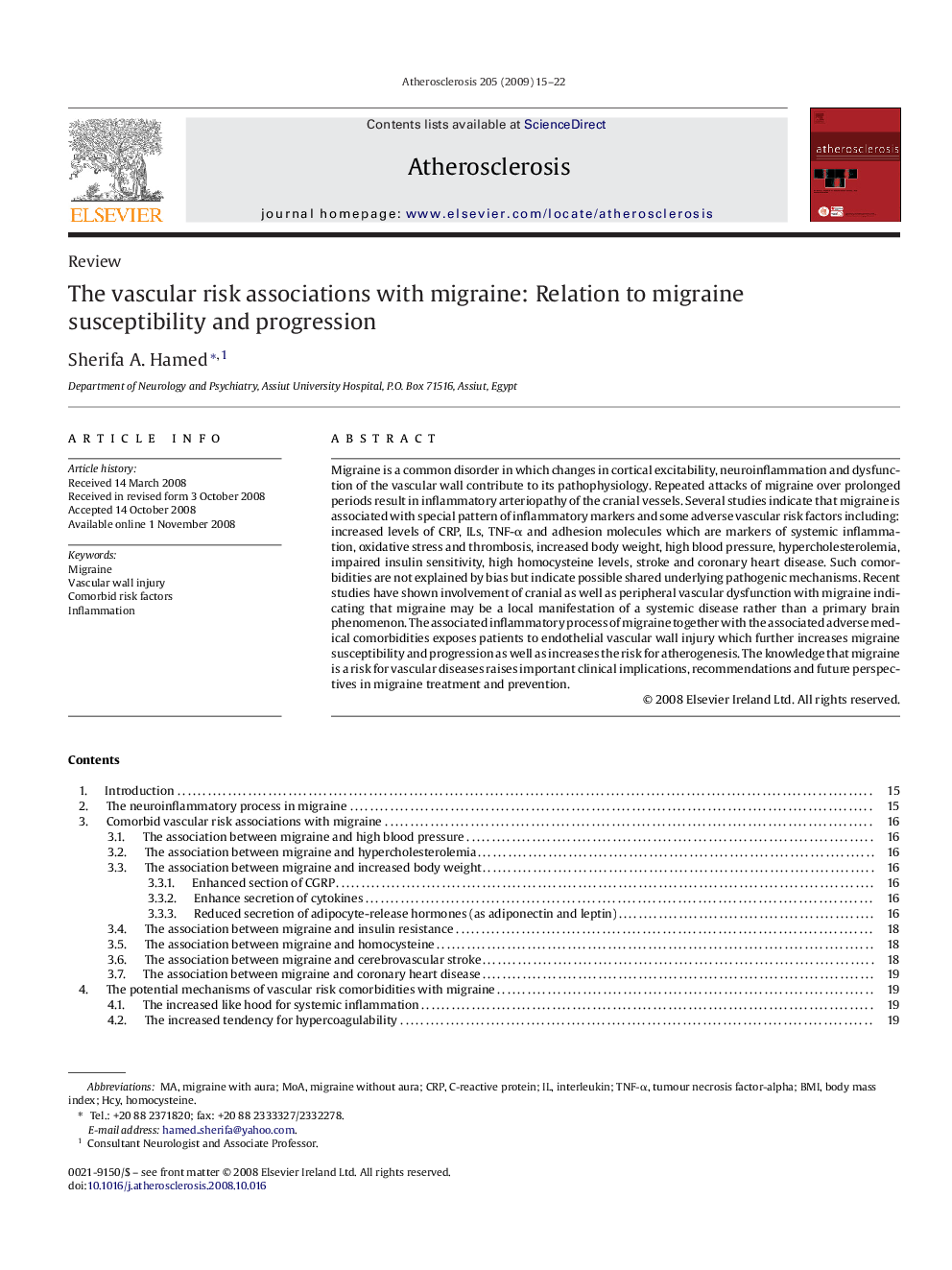| Article ID | Journal | Published Year | Pages | File Type |
|---|---|---|---|---|
| 5950999 | Atherosclerosis | 2009 | 8 Pages |
Abstract
Migraine is a common disorder in which changes in cortical excitability, neuroinflammation and dysfunction of the vascular wall contribute to its pathophysiology. Repeated attacks of migraine over prolonged periods result in inflammatory arteriopathy of the cranial vessels. Several studies indicate that migraine is associated with special pattern of inflammatory markers and some adverse vascular risk factors including: increased levels of CRP, ILs, TNF-α and adhesion molecules which are markers of systemic inflammation, oxidative stress and thrombosis, increased body weight, high blood pressure, hypercholesterolemia, impaired insulin sensitivity, high homocysteine levels, stroke and coronary heart disease. Such comorbidities are not explained by bias but indicate possible shared underlying pathogenic mechanisms. Recent studies have shown involvement of cranial as well as peripheral vascular dysfunction with migraine indicating that migraine may be a local manifestation of a systemic disease rather than a primary brain phenomenon. The associated inflammatory process of migraine together with the associated adverse medical comorbidities exposes patients to endothelial vascular wall injury which further increases migraine susceptibility and progression as well as increases the risk for atherogenesis. The knowledge that migraine is a risk for vascular diseases raises important clinical implications, recommendations and future perspectives in migraine treatment and prevention.
Keywords
Related Topics
Health Sciences
Medicine and Dentistry
Cardiology and Cardiovascular Medicine
Authors
Sherifa A. Hamed,
